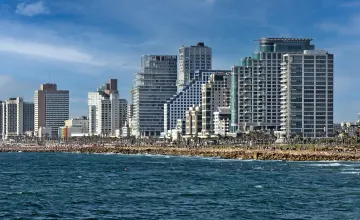The Trumpeldor Cemetery
Tel Aviv travel guideThe Trumpeldor Cemetery is the first cemetery of Tel Aviv, and it is where many of the national Zionist leaders and famous Israeli artists are buried.
For an historic journey in the center of Tel Aviv you should pay a visit to the Trumpeldor Cemetery at 19 Trumpeldor Street. The cemetery is named After Yosef Trumpeldor, a famous Russian Jewish war hero from the beginning of the 20th century, and is the first cemetery of the city and where many of its founding fathers, as well as central Zionist and cultural figures, are buried. Like many old cemeteries, the Trumpeldor Cemetery tells the story of Tel Aviv and its people in the past and present.
The Trumpeldor cemetery was built in 1902 in the southern part of Tel-Aviv by Shimon Rokach, one of the city’s founders and leaders, seven years before the foundation of the city itself. Since then, is has become a pantheon for major politicians and figures of Zionist movements, as well as Israeli artists and authors. Once visiting there, look for a relatively small area in which you will find the gravestones of some of the famous national figures of the country. Amongst others, you will spot the gravestone of the national poet Bialik, the city’s first legendary mayor Arlozorov, some famous Zionist leaders, such as Sheinkin and Nordao, and some famous poets and writers, like Tshernichovski and Ahad Ha’Am. In many ways, the Trumpeldor cemetery is where the city’s streets come back to life, and if you visit there a couple of days after wondering around the city center, surely you will recognize many of these names.
Hotel Metropolitan is located on the very same street, at 11 Trumpeldor St. It is an affordable yet elegant lodging option right next to the beach and is very close to the city center. A second hotel in this area is the Sun City hotel, at 9 Trumpeldor St., which is very well kept and quite intimate. It has great location, too – right next to the city’s lively markets and shopping areas, and only 500 meters from the Mediterranean promenade.







